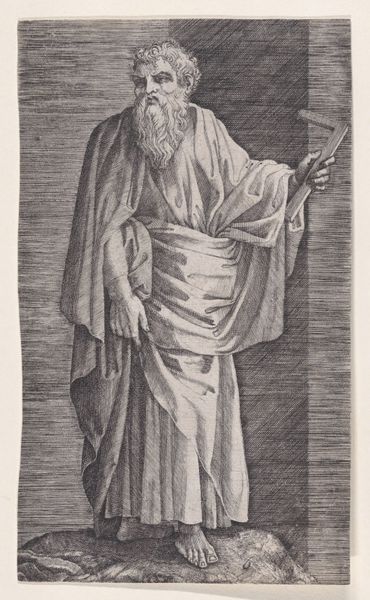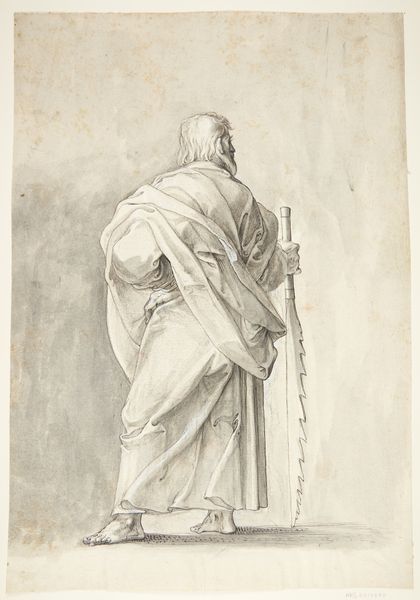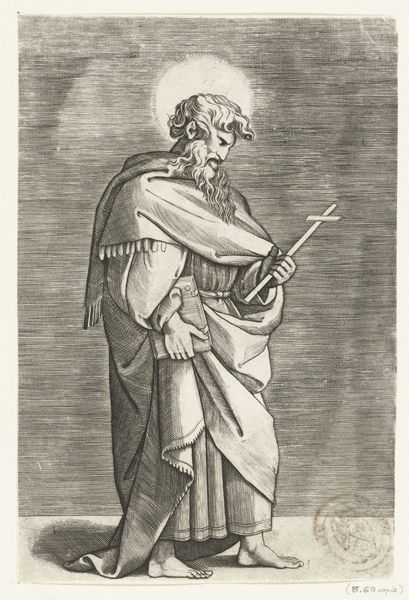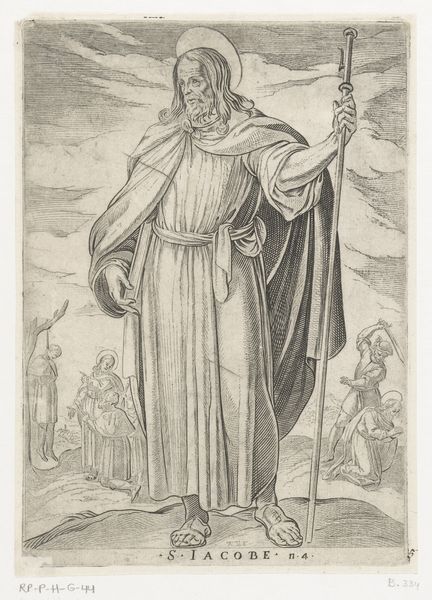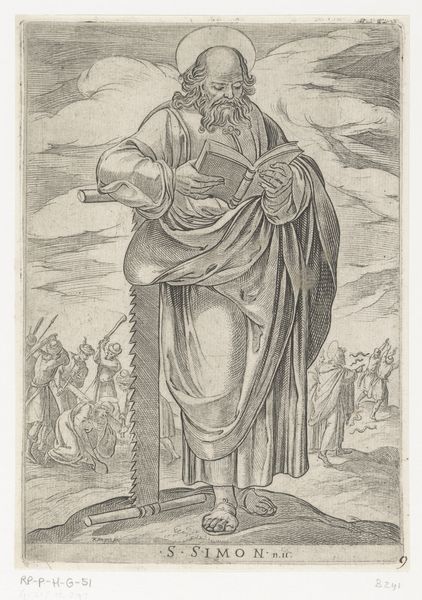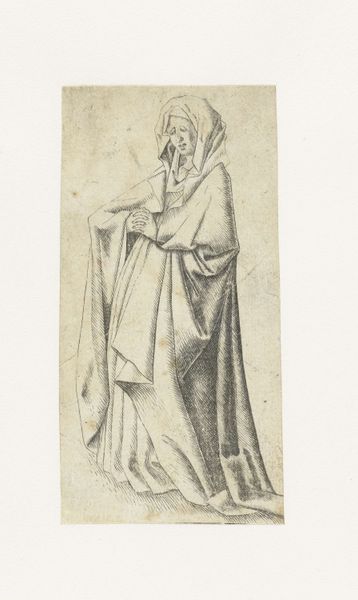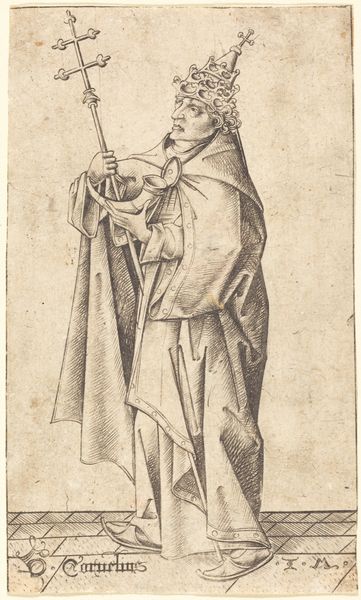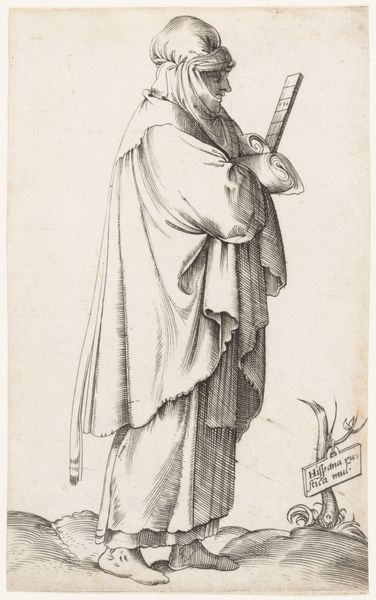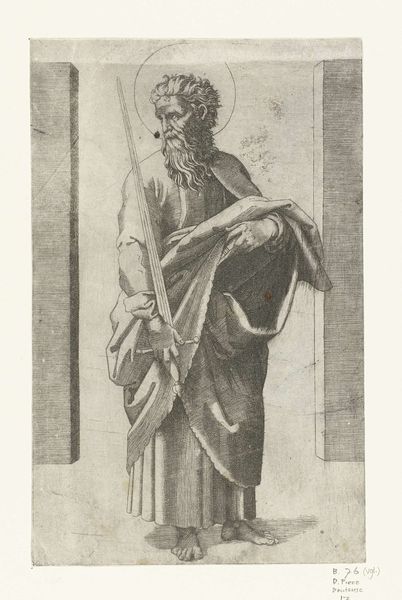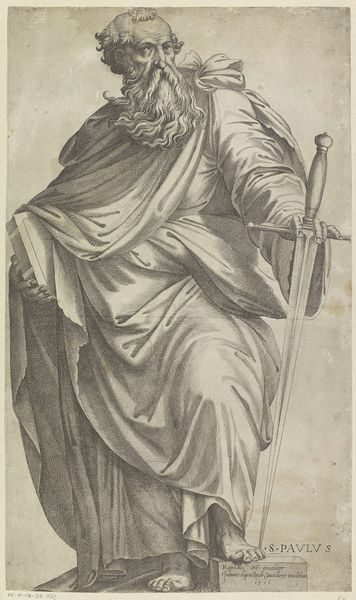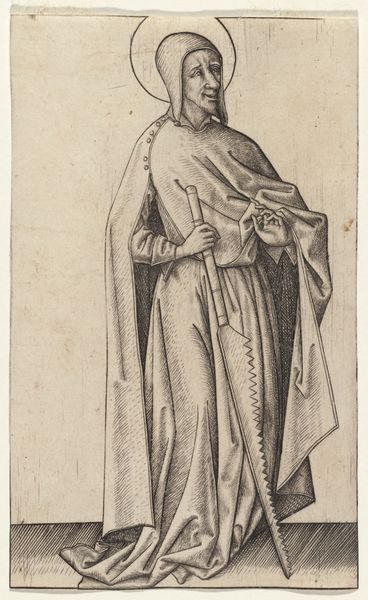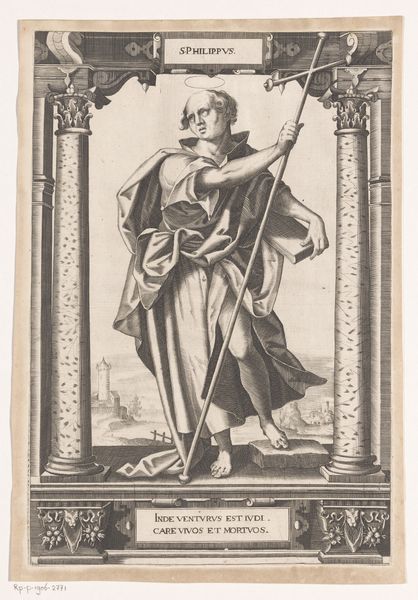
drawing, pencil
#
portrait
#
pencil drawn
#
drawing
#
pencil sketch
#
figuration
#
11_renaissance
#
pencil drawing
#
pencil
#
portrait drawing
Dimensions: 420 mm (height) x 297 mm (width) (bladmaal)
Curator: Welcome. Here we see "Jesus og de 12 apostle: Mathias," or "Jesus and the 12 Apostles: Mathias." The work has been attributed to Matthäus Gundelach and likely dates from between 1566 and 1654. The medium is pencil on paper. Editor: My immediate impression is one of starkness, almost severity. The monochromatic palette emphasizes the angularity of the figure. There's a commanding, but also ascetic presence evoked. Curator: It's fascinating how Gundelach renders Mathias. Notice how the spear, an atypical attribute for an Apostle, becomes an extension of his will, almost a scepter. Mathias replaced Judas, after all, suggesting a need to reassert authority after betrayal. Editor: Exactly. Replacing Judas means he inherits a complicated legacy, filling a void. That spear could symbolize the power dynamics inherent in the structure of the church and, arguably, the violence that comes with maintaining power structures. It definitely subverts the peaceful symbolism we often associate with depictions of Christ’s followers. Curator: That's a potent interpretation. Also consider the visual language; the foreshortening emphasizes his imposing stature. He literally looks down upon the viewer, an assertion of divine authority communicated through Renaissance compositional devices. This would reaffirm, in no uncertain terms, the strength of Christian doctrine. Editor: And I'd counter that it is in looking down on us, from that Renaissance, almost aristocratic distance, this Matthias comes across as almost disconnected. You have to remember the context; while the Bible suggests a certain camaraderie, we should recall the period saw sharp divides based on power, and wealth – aspects which influenced even spiritual life, a world away from Christ's anti-materialist preaching. Curator: Interesting perspective! It's this tension between spiritual mission and earthly authority that resonates. The image continues to elicit engagement and reinterpretations across temporal, theological, and political frameworks. Editor: I agree; considering that duality makes revisiting familiar biblical figures like Matthias continually relevant. What did serving "God" really entail, and who benefitted? That's what stays with me.
Comments
No comments
Be the first to comment and join the conversation on the ultimate creative platform.
